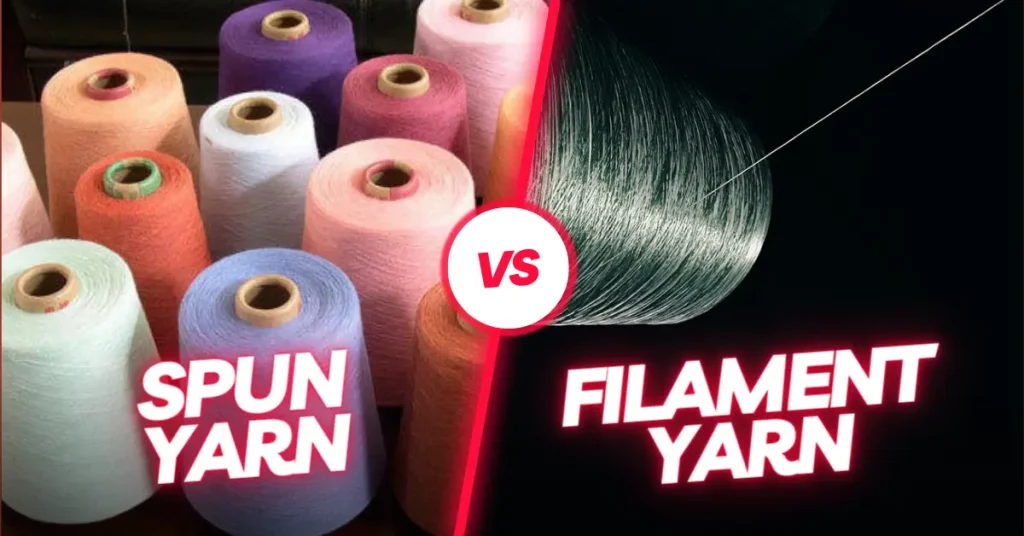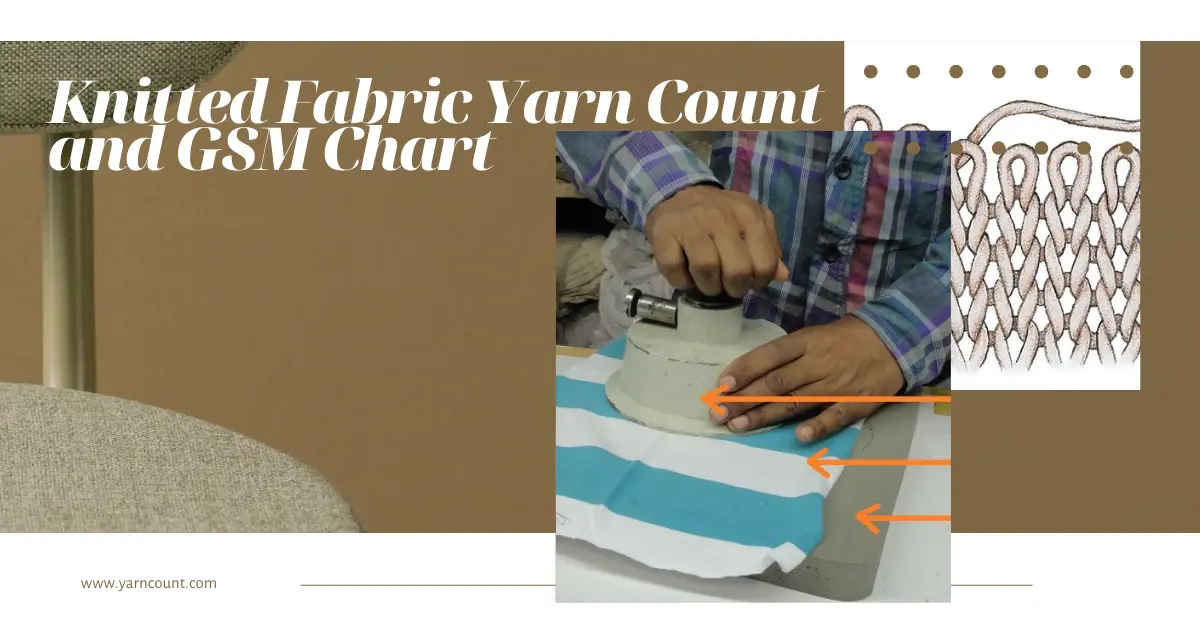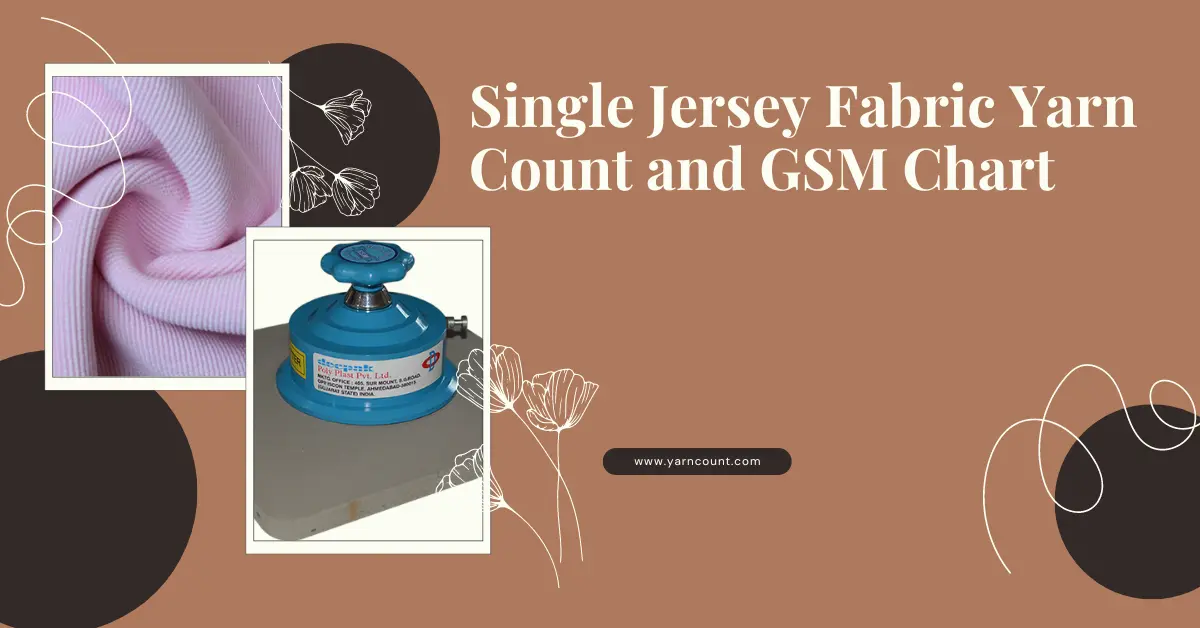In the vast landscape of textile production, two primary types of yarn dominate the scene: the first type of fibres is spun yarn and the second one is filamented yarn. These are two types of yarn that lay the foundation for the textile industry with each variety representing unique features and functions. The clarity between the spun and the filament systems is a must for all who are involved in fabric design and manufacturing, as well as, of course, those who wear clothes each day.
Table of Contents
What is Spun Yarn?
Spinning yarn is probably the oldest type of yarn, which can be traced back to the times when textile manufacturing first emerged. It is made from twisted staple fibers that are blended to create a single stand. Staple fibers are short fibers that are usually between 1 cm and 2 inches long and can be made from different plants, natural or artificial. Cotton, wool, flax, and silk are the main materials of top fibers to produce the spun yarn.
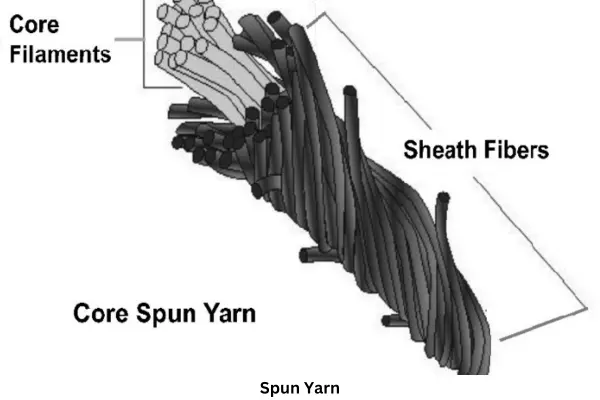
The fibres which are shorter in length are first twisted to create a strong and unified yarn. This aptly shielding effect, which is apt to vary in its intensity, will, in its turn, result in different yarn features like sturdiness, softness and thickness. Single strands can come out in a wide range of types: from very thin and subtle, so that they are great for light apparel, to thicker and sturdy enough to be used for heavy duty purposes.
What is Filament Yarn?
Filament yarn, as opposed to staple yarn, consists of continuous threads of fibres termed filaments that are continuously extruded from a precise hole in a spinneret. This type of threads range from natural and synthetic materials such as polyester, nylon, linen or silk. Unlike rotor yarn, filament yarn does not undergo the twisting process of the fibres but extrudes the thread in continuous stands instead.
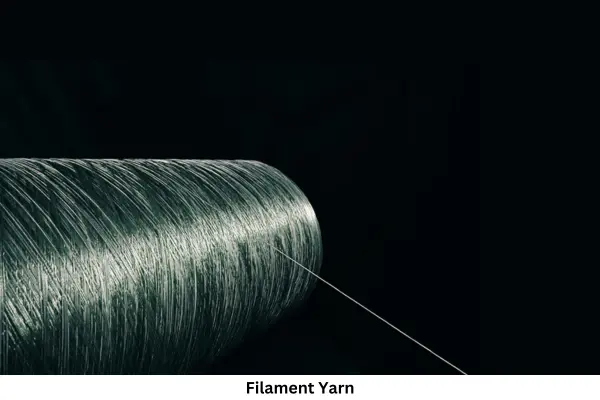
Filament yarns from monofilament and multifilament yarns are the time when monofilament and multifilament yarns are classified. The one thread of the monofilament yarn creates a single continuous filament, which, conversely, are the bundles of filaments that form the multifilament yarn, the threads either twisted or grouped together. With this, we understand that the distinction is pretty expansive and one can obtain a lot of differing features of texture, density, and appearance.
| Aspects | Spun Yarn | Filament Yarn |
| Types of fibres | Spun Yarn is made of cotton, linen, wool or synthetic fibres. | Filament Yarns are madeof natural silk fibres as well as synthetic fibres. |
| Length of fibres | Spun Yarn is made by overlapping or twisting short fibres. | Filament Yarn is made by twisting the long fibres or filaments together continuously. |
| Looks | Dull or less lustrous look. | Cool and lustrouslook. |
| Softness | Comparatively less soft. | More soft than spun yarn. |
| Strength | Comparatively less stronger. | More stronger. |
| Twig | Comparatively less twigs. | More twigs. |
| Hairiness | More hairy. | Less hairy. |
| Manufacturing | Complex manufacturing process compared to Filament Yarn. | Simple manufacturing process compared to Spun Yarn. |
| Absorbance | More absorbent. | Comparatively less absorbent. |
Comparison between Spun yarn & Filament yarn
1. Structure: Twisted together, spun yarn is created out of very short staple fibre strands that provide the texture and the strength. However, the filament yarn is composed of continuous strands that produce an appealing smoothness and uniformity.
2. Strength and Durability: This is because the yarn is made of twisted fibres thus making it more resilient and more suitable for applications requiring strength and durability like denim, wallpapers and carpets. Filament yarn, for example, in the case of multifilament, may be as strong or even stronger than spun yarn, but will not have the inherent texture of a spun yarn.
3.Texture and Appearance: The spun yarns are usually natural looking and irregular due to the individual fibres not being aligned perfectly within the yarn. This felicity helps it to appear good on fabrics used for casual wear as well as for high-end garments. Filament yarns, especially single strand types, lead a sleek and lustrous finish that is much favoured for silk-like fabrics.
4.Processing Ease: Filament yarns have a lower processing level than the spun yarns because these are already continuous and do not require a lot of processing. It is possible to experience several positive effects, including low production prices and faster production time for fabric made from filament.
5. Absorbency: The spun yarns’ tendency to absorb is especially high in the case of cotton or wool fibres, which makes them ideal for bath towels, duvet covers, and so on. Filament yarns, especially the synthetic ones that are less absorbent and more susceptible to moisture-wicking attributes, make it the number one fabric for activewear and outdoor apparel.
Applications
Spun Yarn Applications: Tales of spitted yarns can be found across the fashion sector which incorporates garments, household items and industrial fabrics. They are employed in the manufacture of all kinds of textile products, such as t-shirts, jeans, bed linens, towels, and upholstery fabrics.
Filament Yarn Applications: Filament yarns are mostly used for manufacturing highly valuable fabrics due to their hairiness and brightness. They look very smooth and sparkling and thus are in great demand by luxury apparel, underwear, and evening wear brands. Moreover, their strength and durability make them applicable for technical textiles like for example car upholstery since they are lightweight but strong too, geotextiles, and medical fabrics.
Conclusion
This entire spun yarn against the filament yarn image is neither about who the winner is, but it shows the different functions of each type of yarn in the textile world based on their purposes. Spun yarns bring a cosy, tactile, luscious impression and are therefore preferred by traditionalists and artisans; however, filament yarns are characterised by a consistent and modern look, so designers and technophiles use them often. Knowing the characteristics and dissimilarities of the various classes helps textile makers and designers to play to their strengths while doing their best to solve consumer choice problems by meeting their various requirements. The range of cottons, from the quaint mood of a cotton sweater to the glossy stylishness of a satin attire, is served by spun or filament yarns, which are employed to form materials we admire and wear every hour of the day.
